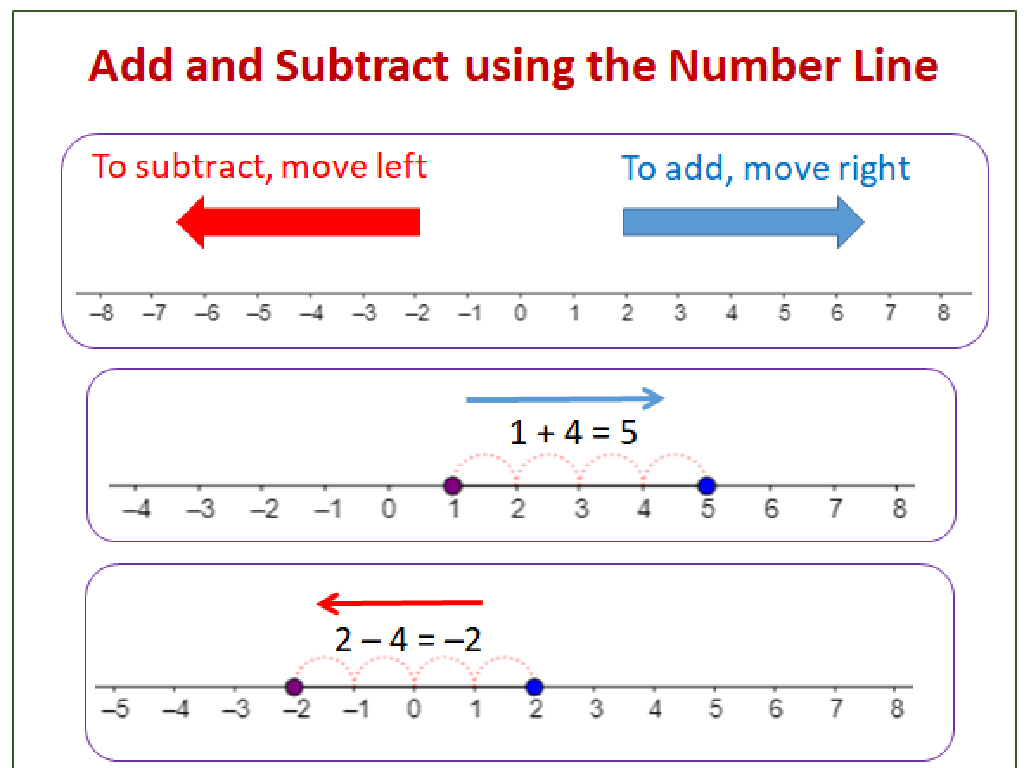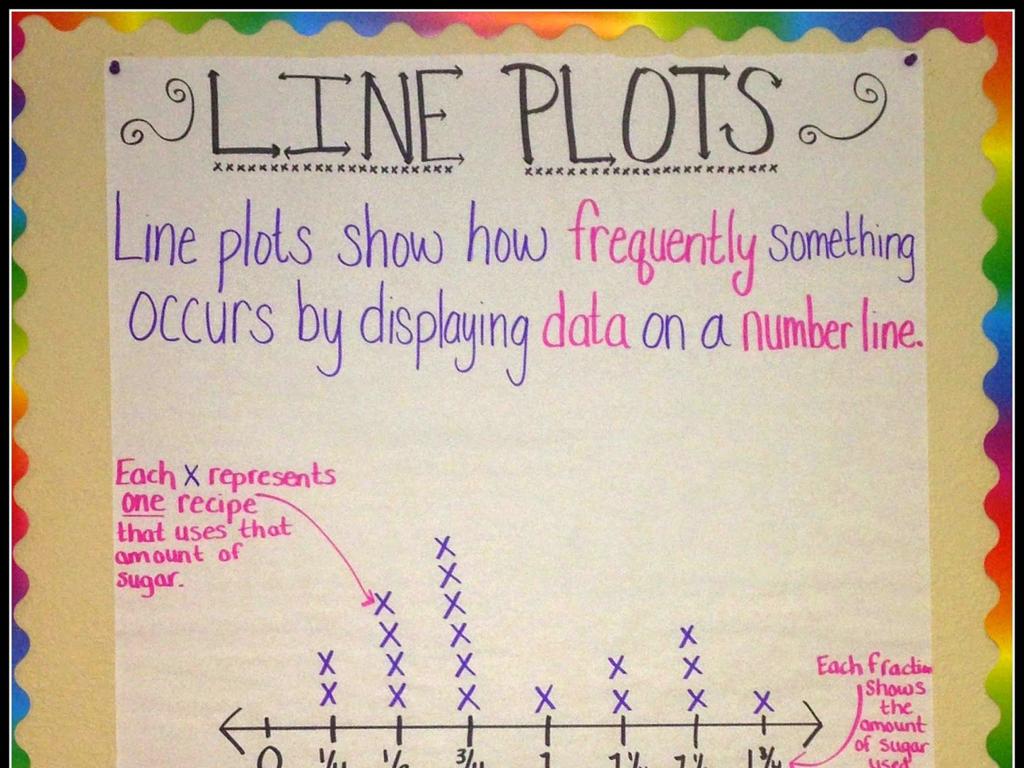Estimate Quotients
Subject: Math
Grade: Sixth grade
Topic: Divide Whole Numbers
Please LOG IN to download the presentation. Access is available to registered users only.
View More Content
Introduction to Division
– Division as equal sharing
– Imagine dividing 12 apples evenly among 4 friends.
– Division in daily life
– Splitting a pizza into equal slices for a party.
– Key division terms
– Dividend: number being divided. Divisor: number you divide by. Quotient: result. Remainder: what’s left over.
– Estimating quotients
|
This slide introduces the concept of division, framing it as a method of sharing things equally among a certain number of people or groups, which is a relatable concept for sixth graders. Provide real-life scenarios where division is used, such as dividing a pizza among friends, to make the concept more tangible. Review the key terms in division to ensure students are familiar with the vocabulary: dividend (the number being divided), divisor (the number you divide by), quotient (the result of division), and remainder (what’s left over if the division isn’t exact). Lastly, touch on the concept of estimating quotients as a way to quickly gauge the result of division without needing an exact answer, setting the stage for more in-depth exploration of this skill in subsequent slides.
Understanding Estimation in Division
– Estimation: A definition
– Estimation is finding a number close to the exact amount.
– The usefulness of estimation
– Estimation helps simplify complex calculations and checks reasonableness of answers.
– Estimation in everyday life
– Examples: Roughly calculating shopping expenses, time needed for travel.
– Practice estimation skills
– Let’s estimate the quotient of 487 divided by 32.
|
Estimation is a mathematical skill that allows us to find an approximate value rather than the exact answer. It’s particularly useful when exact calculations are not necessary, or to quickly check the plausibility of a computed answer. In daily life, we use estimation to make quick decisions, like approximating costs while shopping or time required for a journey. Encourage students to think of times they have used estimation outside of school. For practice, present problems where students can apply estimation to division, reinforcing the concept that estimation is a practical and valuable tool in mathematics and everyday situations.
Estimating Quotients
– Estimate using rounding
– Round the divisor and dividend to nearest tens or hundreds
– Use compatible numbers
– Find numbers close to the original that divide evenly
– Practice: 578 ÷ 9
– Round 578 to 580 and 9 to 10, then estimate 580 ÷ 10
– Why estimation is useful
|
This slide introduces students to the concept of estimating quotients as a way to simplify division problems. Start by explaining how to round numbers to the nearest ten or hundred to make division easier. Then, discuss the use of compatible numbers, which are numbers close to the original that divide evenly, to find an estimate that is close to the actual quotient. Use the example of 578 ÷ 9 to demonstrate rounding in practice: round 578 to 580 and 9 to 10, making the problem 580 ÷ 10, which equals 58. Emphasize that estimation is a valuable skill for checking the reasonableness of answers and for making quick calculations when an exact number isn’t necessary.
Estimation Strategies for Quotients
– Round the divisor to nearest ten
– Round the dividend to nearest hundred
– Use close multiples for estimation
– If 6 is close to 5, use 5’s multiples to estimate
– Activity: Estimate 452 ÷ 6
– Round 452 to 450 and 6 to 5, then divide
|
This slide introduces students to various strategies for estimating quotients, an essential skill for quick mental math and checking the reasonableness of answers. Start by rounding the divisor to the nearest ten to simplify the division. Then, round the dividend to the nearest hundred for easier computation. Encourage students to find close multiples that are easy to work with when estimating. For the activity, guide students to round 452 to 450 (since it’s closer to 450 than 500) and 6 to 5 (as it’s closer to 5 than to 10). Then, they should divide 450 by 5 to estimate the quotient. This exercise will help them grasp the concept of estimation and apply it to division problems. Provide additional examples if time allows and encourage students to explain their reasoning.
Estimation vs. Exact Answers in Division
– When to use estimation
– Use estimation for quick checks or when an approximate value is acceptable.
– Estimate vs. exact answer
– An estimate is a close guess, an exact answer is precise.
– Activity: Estimating quotients
– Estimate 1234 ÷ 13 using rounding or compatible numbers.
– Compare with exact results
– How does the estimate differ from the exact quotient of 1234 ÷ 13?
|
This slide introduces students to the concept of estimation in division, explaining when it’s appropriate to use estimation instead of calculating the exact answer. It’s important to highlight that estimation is useful for making quick decisions or when precision is not critical. The activity involves estimating the quotient of 1234 divided by 13 and then comparing it to the exact answer, reinforcing the understanding of estimation’s role and accuracy. Encourage students to discuss why estimates can be useful and to consider situations in daily life where an exact number may not be necessary. This will help them appreciate the practicality of estimation in mathematics and beyond.
Class Activity: Estimation Relay
– Divide into small groups
– Estimate division problems
– Use rounding to nearest ten or hundred for easier estimation
– Present and discuss estimates
– Share your group’s estimates with the class
– Reflect on strategies used
– Discuss how you decided on the estimate, what made it easier or difficult?
|
This interactive class activity is designed to promote teamwork and enhance students’ estimation skills in division. Begin by dividing the class into small groups, ensuring a mix of abilities in each group. Assign different division problems to each group, tailored to challenge their estimation skills. Encourage the use of rounding to the nearest ten or hundred as a strategy for estimation. After the activity, have each group present their estimated quotients and the strategies they used to the class. This will foster a collaborative learning environment where students can learn from each other’s approaches. Conclude the activity with a reflection session where students can discuss what strategies worked well, which ones were challenging, and how they can improve their estimation skills in the future. Provide guidance and feedback throughout the activity to support student learning.
Homework and Wrap-up: Estimating Quotients
– Assign practice problems
– Recap on estimation importance
– Estimation helps check the reasonableness of answers
– Conduct a Q&A session
– Opportunity to ask questions and get explanations
– Review and clarify doubts
– Ensure understanding before practice
|
As we conclude today’s lesson on estimating quotients, assign a set of practice problems that reinforce the concepts learned. Emphasize the importance of estimation in checking the reasonableness of answers, especially in real-world scenarios where exact answers are not always necessary. Open the floor for a Q&A session, allowing students to seek clarification on any part of the lesson they found challenging. This is crucial for addressing any misconceptions before they practice independently. Encourage students to review their notes and the examples discussed in class to aid in their homework. Provide guidance on how to approach the problems and remind them of strategies to estimate effectively.






